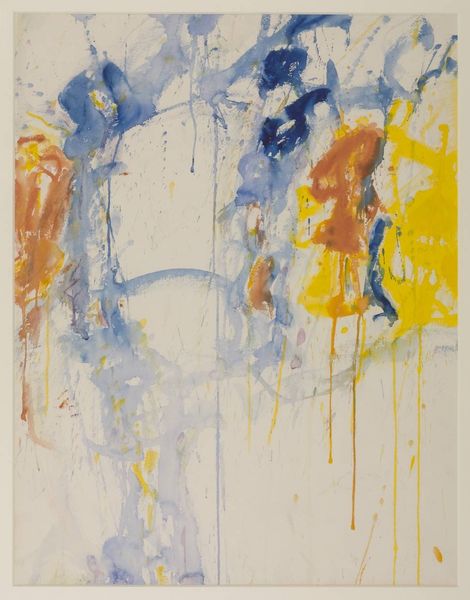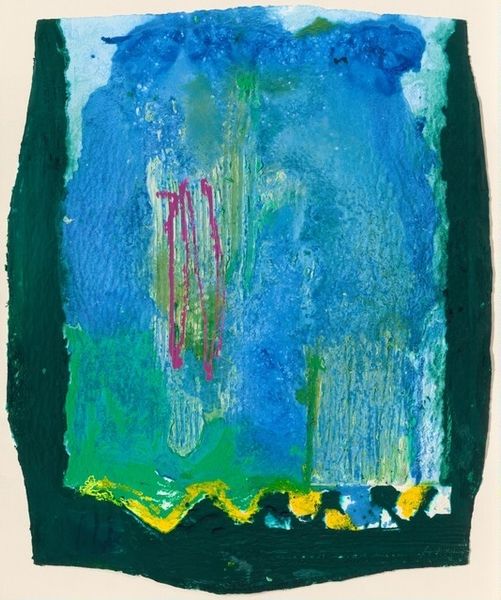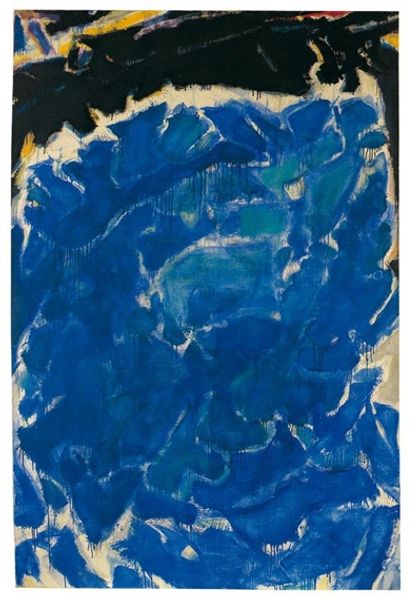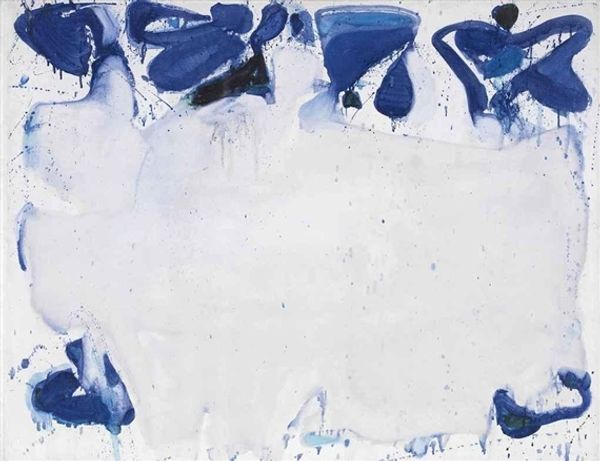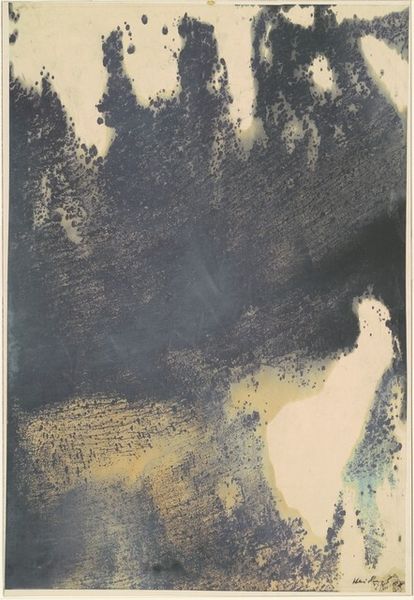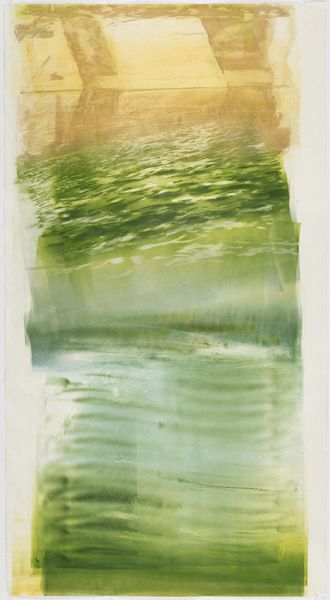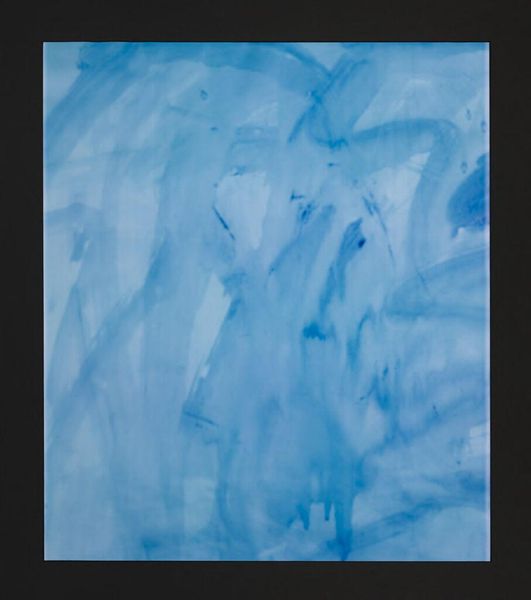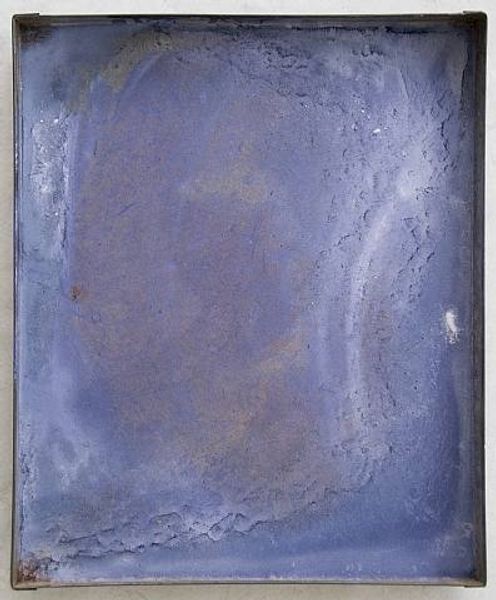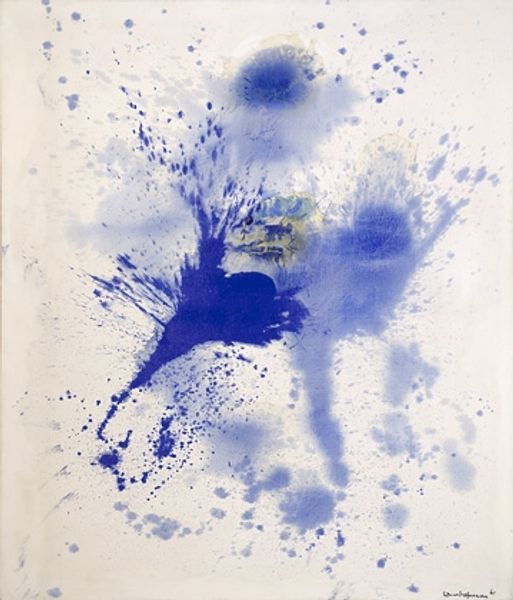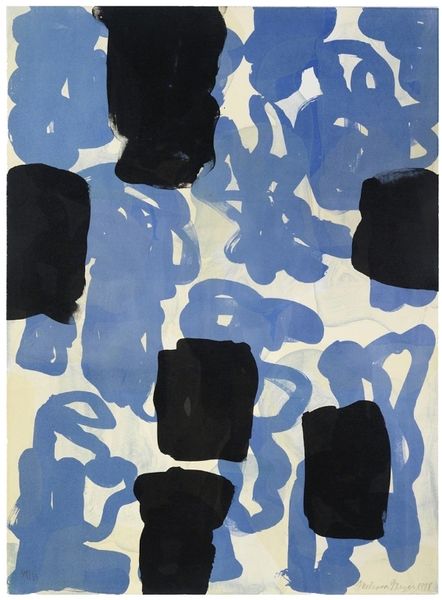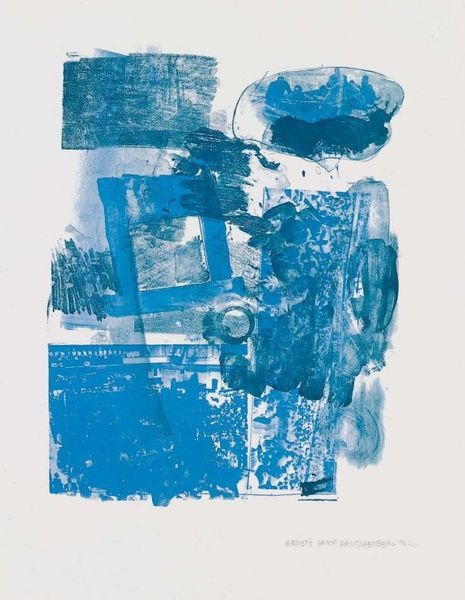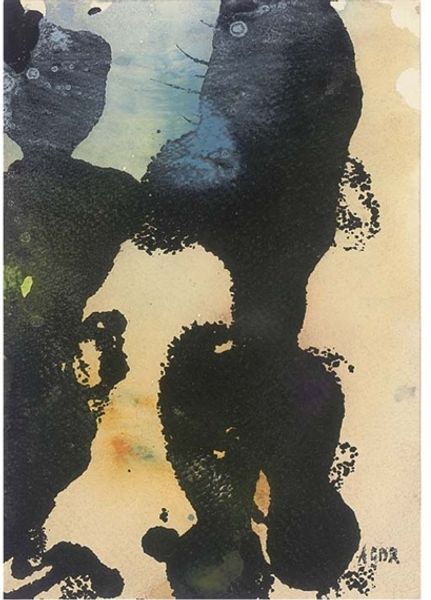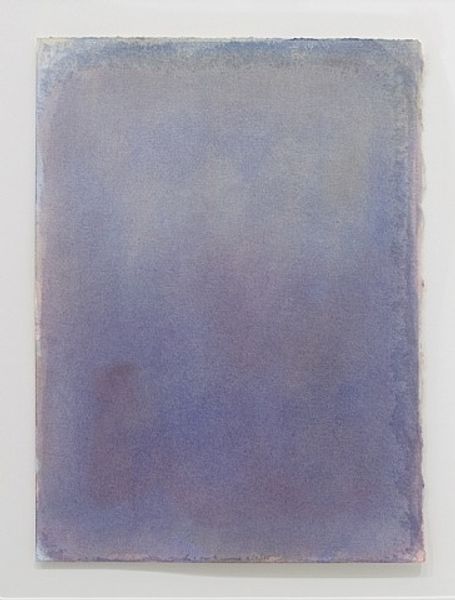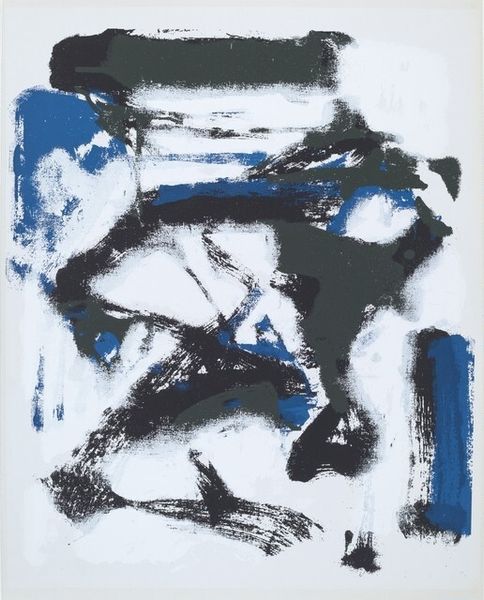
Copyright: Helen Frankenthaler,Fair Use
Editor: Here we have Helen Frankenthaler's "Reflections V" from 1995, created with ink and gouache on paper using a stain technique. It's largely monochrome, various shades of blue with some delicate lighter hues interspersed, and even a stroke of green. There’s something fluid and almost ethereal about it. What can you tell us about it? Curator: What I find most compelling is the way Frankenthaler subverts the traditional hierarchy between painting and craft through her deliberate engagement with materiality. The 'stain' technique wasn't merely about applying color; it was about forcing the canvas to actively participate in the art-making. How do you think the mass production of pigments and readily available paper in 1995, its effect of widespread materials, plays into her approach? Editor: That's a really interesting angle, I hadn’t considered it. So, it's almost like the availability of these materials democratized the artistic process, allowing her to explore these techniques so freely? Curator: Exactly. Think about the labour involved. Unlike traditional painting with thick impasto, the staining technique relies on a more collaborative process. It is less about dominating the canvas and more about working with the inherent qualities of the material. Does this resonate with how we see art's role in challenging traditional class structures and the idea of the artist as solely the upper class elites? Editor: I can see that now. I was so caught up in the visual aspect that I completely missed that underlying conversation about production. It is no longer what she depicts, but rather the material reality and context that holds deeper meaning and is therefore highlighted, especially her focus on artistic practices in a world of mass availability. Curator: Precisely! And the more available a material becomes, its value for artists shift. With Frankenthaler's "Reflections V", we’re not just admiring a pretty picture but interrogating the very means by which art is made and consumed. It makes you think about her place in art history a lot more, don’t you think? Editor: I do, yes. I will definitely never look at this style of abstract work the same way again. Thanks!
Comments
No comments
Be the first to comment and join the conversation on the ultimate creative platform.
